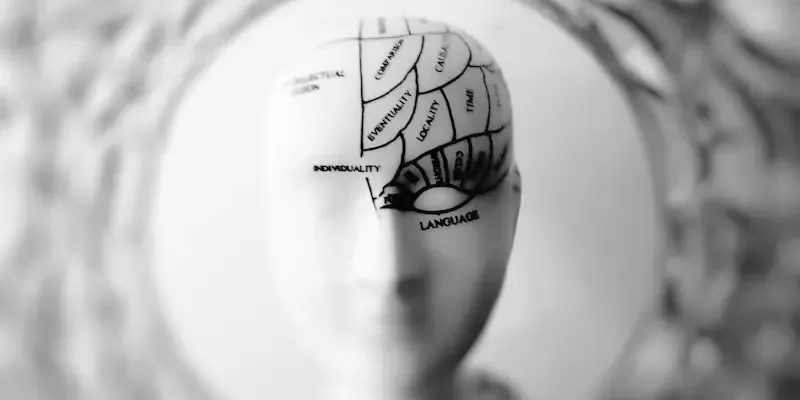Schema Therapy For Practitioners: 7 Questionnaires and Tests
 Measurement and analysis are crucial to successful treatment in Schema Therapy.
Measurement and analysis are crucial to successful treatment in Schema Therapy.
Having an awareness of the client’s schemas, needs, and the childhood experiences that underpin them enables the therapist to better apply appropriate interventions and identify positive changes when they occur.
Understanding is central to the therapy’s goal that the client “finds adaptive ways to meet their core emotional needs” while regaining control from unhelpful thoughts, beliefs, and behaviors (Young, Klosko, & Weishaar, 2007).
This article looks at some questionnaires and tests that support both initial and ongoing assessments within Schema Therapy.
Before you continue, we thought you might like to download our three Positive Psychology Exercises for free. These science-based exercises explore fundamental aspects of positive psychology, including strengths, values, and self-compassion, and will give you the tools to enhance the wellbeing of your clients, students, or employees.
This Article Contains:
What Do You Need to Assess?
Like most other psychological therapies, Schema Therapy (ST) includes an assessment phase, education, and a treatment phase.
The goal of assessment is to gain insight into the schemas that are currently active (schema modes) and the coping mechanisms the client currently has in place. Based on the outcome, Schema Therapy treatment introduces a series of interventions to implement schema healing and replace what is unhelpful with what is more appropriate.
To satisfy the client’s core emotional needs and gain conscious control over their schemas – and ultimately live a more complete life – ST must form a picture of the client’s present mental state and the childhood memories beneath (Young, 1990; Arntz & Jacob, 2013).
The Schemas, Needs, and Modes Reference Sheet provides a list of the concepts that must be understood and introduced by the therapist to the client.
What are the goals of assessment and education of ST?
There are six goals for the assessment and education phase of ST (modified from Young et al., 2007):
- Identify dysfunctional life patterns
- Identify early maladaptive schemas and their triggers
- Understand the source of the schemas in childhood and adolescence
- Identify coping styles and responses
- Assess temperament
- Wrap it all up in a case conceptualization
The therapist works with the client to understand life patterns, coping styles, and schemas and then builds and evolves hypotheses until they are validated.
What is involved in assessment and evaluation?
The initial part of the assessment and evaluation phase forms a picture of the client’s problems and goals for therapy. Crucially, it also “evaluates the patient’s suitability for schema therapy” (Young et al., 2007).
Next, the therapist creates a view of the client’s life history and picks out dysfunctional life patterns. Such patterns are often long term, self-perpetuating, and stop the client from fulfilling their basic emotional needs, leading to dissatisfaction in life, relationships, and work (Young et al., 2007).
At this point, the therapist needs to share with the client that the process aims to identify their schemas and coping styles. This is facilitated by using questionnaires to be completed as part of homework, then discussed in subsequent sessions.
The next stage of the assessment requires considerable skill and deep knowledge of ST. The therapist attempts to “access and trigger schemas and to link schemas to their childhood origins and to the presenting problems” (Young et al., 2007). Such connections are achieved through experiential techniques, most notably imagery.
The therapist pays particular attention to the client’s schemas and coping styles as they crop up in the therapist–client relationship during assessment.
There are several outcomes from this assessment stage for the client:
- Recognition and knowledge of their schemas
- Understanding of the origins of the schemas in their childhood
- Awareness of the self-destructive patterns throughout their lives
- Awareness and understanding of the coping styles they have in place to manage such schemas
- How early life led them to these schemas and coping mechanisms
- Ability to connect schemas to their presenting problems
Overall, the client’s “schemas and coping styles become unifying concepts in the way they view their lives” (Young et al., 2007).
Schema Questionnaires and Assessment Methods

While some clients benefit from using the Young Parenting Inventory, others prefer the Young Schema Questionnaire (Young et al., 2007).
Clients sometimes favor the former as they more easily remember their parents’ attitudes and behaviors than their own emotions (Young et al., 2007).
Using more than one tool reduces the risk of inaccuracies and building an incomplete or incorrect picture. As a result, the assessment becomes a multi-faceted approach, combining information from cognitive, experiential, and behavioral measures with the knowledge gained from the therapist–client relationship. Understandings are tested as hypotheses and revised as needed in response to new information.
While questionnaires, logical analysis, and empirical evidence are intellectually valuable, they must be supplemented with emotionally rich experiential techniques such as imagery.
After all, sometimes validating a hypothesis comes down to what feels right. “A correctly identified schema usually resonates emotionally for the patient” (Young et al., 2007).
Ultimately, the output of the assessment phase is a set of core schemas captured in a case conceptualization. And it may take some time. While it is possible in as few as five sessions, it could take considerably longer if clients are more avoidant.
Assessment of the suitability of the patient for schema therapy
While ST is a successful and influential approach to treating people with mental health problems, it is not suitable for everyone (Jacob & Arntz, 2013).
If the patient meets any of the following conditions, schema therapy should not proceed or should be postponed (modified from Young et al., 2007):
- They are in a major crisis in some other area of their life.
- They are psychotic.
- They have an “acute, relatively severe untreated Axis I disorder requiring immediate attention” (Young et al., 2007).
- They are moderately or severely abusing alcohol or drugs.
- They are presenting a situational problem rather than a schema or life pattern.
If the client is in crisis or suffering from another acute disorder, the therapist must focus there first.
If the client is suitable for ST, the assessment stage should continue gathering information on schemas (schema modes), emotional needs, and unhelpful coping behavior.
Young Schema Questionnaire (YSQ)
Young and colleagues have identified 18 early maladaptive schemas, assessed using their Young Schema Questionnaire (YSQ).
- Abandonment/instability
- Mistrust/abuse
- Emotional deprivation
- Defectiveness/shame
- Social isolation/alienation
- Dependence/incompetence
- Vulnerability to harm or illness
- Enmeshment/underdeveloped self
- Failure
- Entitlement/grandiosity
- Insufficient self-control/self-discipline
- Subjugation
- Self-sacrifice
- Approval seeking/recognition seeking
- Negativity/pessimism
- Emotional inhibition
- Unrelenting standards/hyper criticalness
- Punitiveness
The latest version of the YSQ is available for purchase at the Schema Therapy Institute, but they also have older materials available to view.
The client rates themselves on a scale between one and six, where one is completely untrue of me and six describes me perfectly, against a series of statements, such as the following (taken from version 3):
_ People have not been there to meet my emotional needs.
_ For much of my life, I haven’t felt that I am special to someone.
_ I worry that people I feel close to will leave me or abandon me.
_ It seems that the important people in my life are always coming and going.
_ I feel that people will take advantage of me.
The therapist reviews the completed questionnaire with the client, exploring statements that have been rated very high. For example, “can you tell me more about what this statement means to you?”
This exercise provides an opportunity to discuss schemas with clients and can lead to intense emotions.
Working through the answers and using the client’s life history, “the therapist continually formulates and revises hypotheses about the patient’s schemas and links schemas to the patient’s presenting problems and life history” (Young et al., 2007).
Scoring and interpretation of the Schema Mode Inventory
Young Parenting Inventory (YPI)
The Young Parenting Inventory (YPI) is an essential tool for uncovering the childhood origins of schemas and can be purchased from the Schema Therapy Institute (Young et al., 2007).
A few weeks after completing the YSQ, the client is typically given the 72-item questionnaire for homework. Each parent is rated on a variety of behaviors, with a score between one and six. The questionnaire can be adapted as needed to include other caregivers with whom the client lived as a child.
A brief extract is given below (modified from Young et al., 2007):
| Mother | Father | Description |
|---|---|---|
| Loved me, treated me as someone special. | ||
| Spent time with and paid attention to me. | ||
| Gave me helpful guidance and direction. | ||
| Listened to me, understood me, shared feelings with me. |
According to Young, “the inventory is a measure of the most common origins we have observed for each Early Maladaptive Schema. It reflects the childhood environments that, from our observation, are likely to shape the development of specific schemas” (Young et al., 2007).
However, it is crucial to note that the child may have experienced difficult or even traumatic situations without developing the expected schema. This could happen as a result of the following:
- The client’s temperament prevented the formation of the schema.
- Another parent or caregiver compensated for the unmet needs.
- An event or person healed the schema later in life.
Following completion, the therapist reviews and discusses high-scoring items with the client. Their aim is to form a complete picture of the contribution made by each parent to schema development. Once achieved, the therapist can explain to the client how upbringing and schema are linked to the problems presented by the parent (Young et al., 2007).
Imagery assessment
In Schema Therapy – A Practitioner’s Guide, Young et al. (2007) explore how to use imagery to build an emotional (in addition to the intellectual) understanding of the client’s schemas and coping styles.
Imagery can often lead to surprising and dramatic revelations not caught in the previous questionnaires and is valuable for uncovering schemas.
The exercise begins with the therapist explaining the process and then sharing the approach designed to help the client:
- Feel their schemas.
- Understand the origin of their schemas in childhood.
- Connect their underlying schemas to their presenting problems.
The client is then instructed to close their eyes, relax, and let an image float into their awareness. This should not be forced, but happen naturally.
The client is then asked to immerse themselves in the image, describing out loud and in the present tense what they are experiencing.
Moving on to imagining themselves as a child with their parent in an upsetting situation, they are asked to consider:
What do you say to the parent? What do they say to you?
The client considers how they would like their parents to act and what they would want them to say.
The process is repeated, but this time in the present day’s events, verbalizing what they see, think, and feel to the therapist.
The session’s output can be revealing and used to validate, challenge, and revise hypotheses formed about the client in the YSQ and YPI.
3 Helpful Tests and Questionnaires

Young-Rygh Avoidance Inventory
This 41-item Young-Rygh Avoidance Inventory is used to assess schema avoidance and can be found at the Schema Therapy Institute. As before, the client rates themselves (scoring between one and six) against a series of statements (Young et al., 2007):
_ I watch a lot of television when I am alone.
_ I try not to think about things that upset me.
_ I get physically ill when things don’t go well for me.
The questionnaire’s overall scores are not as important as the dialogue that arises from its completion, review, and assessment.
The avoidance strategies identified are likely to be relevant to several schemas, rather than just one.
Young Compensation Inventory
The Young Compensation Inventory assesses schema overcompensation. This 48-item questionnaire is available at the Schema Therapy Institute and is scored on a six-point scale against statements such as:
_ I take out my frustrations on the people around me.
_ I often blame others when things go wrong.
_ I show a lot of anger when people let me down or betray me.
_ I can’t let go of anger without getting revenge.
_ I get defensive when I’m criticized.
As before, the questionnaire results provide a focus point, allowing the therapist and client to engage and discuss poor coping styles.
The two inventories provide an initial baseline and can also be used for ongoing assessment throughout the ST treatment.
Self-observation
While not a formalized test, self-observation is hugely beneficial for the client. Based on their increasing knowledge of ST and the outputs from prior questionnaires, they can monitor their schemas’ activity in their current lives.
The Schema Diary provides a useful tool for the daily capture of schemas and coping styles.
Observation of self-destructive behavior may not be solvable yet but can be discussed at subsequent work sessions with the therapist.
Further Reading: PositivePsychology.com’s Resources
We have several resources available to help with self-examination and monitoring coping styles and unhelpful behavior.
- The Coping Styles Formulation worksheet is useful for the initial assessment of the client’s coping mechanisms.
- The Imagery Based Exposure Worksheet is an easy introduction to Imagery Therapy and allows a therapist to access and trigger schemas.
- This short Avoidance Plan Worksheet is useful to assist a client prone to avoiding issues.
If you’re looking for more science-based ways to help others enhance their wellbeing, this signature collection contains 17 validated positive psychology tools for practitioners. Use them to help others flourish and thrive.
Related articles worth reading include:
- Schema Therapy in Practice: 12 Worksheets & Techniques
- Training in Schema Therapy: 14 Courses and Online Options
- 9 Best Self-Esteem Questionnaires (+Rosenberg Self-Esteem Scale)
- Self-Leadership Assessment: 4 Questionnaires to Help Evaluate Leaders
- How to Practice Self-Care: 10+ Worksheets and 12 Ideas
A Take-Home Message
Schema Therapy is a powerful therapy that helps people with a broad range of psychological problems. It provides a clear and structured approach to analyze clients’ needs and a set of therapy interventions to live a happier life.
However, like other therapies, ST relies on an in-depth initial and ongoing assessment to understand the challenges clients face, their schemas, and their origins in childhood.
The therapist must conceptualize the client’s life history and recognize long-term, self-perpetuating dysfunctional behavior patterns that prevent the client from living fully.
The assessments included are standard questionnaires and approaches widely used in ST. They have been validated through research and practical application and have consistently proven to be appropriate and beneficial to ongoing intervention.
Use them to identify dysfunctional life patterns, early maladaptive schemas (and their origins), and the coping styles clients are presently using. Once completed as part of homework, the questionnaires can then be discussed in subsequent therapy sessions.
Once the client’s history and patterns are fully assessed and hypotheses validated, the therapist can use tailored interventions to encourage healing and growth.
We hope you enjoyed reading this article. Don’t forget to download our three Positive Psychology Exercises for free.
- Arntz, A., & Jacob, G. (2013). Schema therapy in practice: An introductory guide to the schema mode approach. John Wiley & Sons.
- Jacob, G. A., & Arntz, A. (2013). Schema therapy for personality disorders—A review. International Journal of Cognitive Therapy, 6(2), 171–185.
- Young, J. E. (1990). Cognitive therapy for personality disorders. Professional Resources Press.
- Young, J. E., Klosko, J. S., & Weishaar, M. E. (2007). Schema therapy: A practitioner’s guide. Guilford Press.
Let us know your thoughts
Read other articles by their category
- Body & Brain (42)
- Coaching & Application (56)
- Compassion (26)
- Counseling (50)
- Emotional Intelligence (24)
- Gratitude (17)
- Grief & Bereavement (21)
- Happiness & SWB (39)
- Meaning & Values (25)
- Meditation (20)
- Mindfulness (44)
- Motivation & Goals (43)
- Optimism & Mindset (32)
- Positive CBT (25)
- Positive Communication (20)
- Positive Education (44)
- Positive Emotions (30)
- Positive Leadership (13)
- Positive Psychology (32)
- Positive Workplace (33)
- Productivity (16)
- Relationships (42)
- Resilience & Coping (34)
- Self Awareness (20)
- Self Esteem (36)
- Software & Apps (22)
- Strengths & Virtues (30)
- Stress & Burnout Prevention (33)
- Theory & Books (44)
- Therapy Exercises (35)
- Types of Therapy (58)



What our readers think
I’ve some queries about the type of training and those conducting these assessments would need to have? If someone was using these schema assessment tools and questionnaires to make fixed and definitive diagnosis in a forensic setting would you consider this to be acceptable application? Having seen a number of these schema assessments used to diagnose maladapted parents in family court, specifically using the schema assessment to diagnose personality disorders and significant psychopathologies, is this safe practice? And would it be equally considered safe practice if such a person were not regulated or registered or hold a valid psychology degree at any level? Say a self-styled parental alienation expert using such schema assessments to diagnose parental alienation based on their interpretation of one parents schemas?
Hi LadyRagnell,
Thank you for your questions. Although schema therapy includes an ‘assessment phase,’ it is not really a diagnostic tool. That is, its classification scheme of ‘diagnoses’ aren’t recognized by formal institutions (e.g., the legal system) in the same way as those listed in the DSM-5 are. There are better questionnaires and holistic assessment strategies that can be used for diagnosing psychopathologies and personality disorders in these sorts of settings.
The Schema Therapy questionnaires are more useful for assessing the nature of thinking and behavior. In this sense, they can kind of supplement and give context to the way particular psychological diagnoses manifest in the day-to-day, helping to draw links between these and experiences in childhood, etc.
Given Schema Therapy is generally considered an advanced form of psychotherapy, those practicing it (or using it to supplement diagnoses) should be licensed therapists/psychologists and have clinical experience. You’ll find some more information about these sorts of requirements here.
Hope this helps!
– Nicole | Community Manager